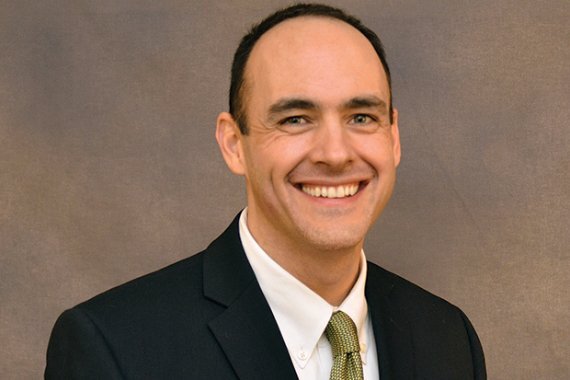
Here are a few insights culled from those interviews. More can be found in CU Journals Aug. 8

"I think growth is no longer something most boards think would be 'nice to have,' they think it is a 'must have,' as they see the clear segmentation of performance based on asset size," Gentile wrote in an email to CU Journal.
One path for that, he added, is continuing to tell the credit union story and finding ways to make CUs stand out in the marketplace.
"There's a bank on every corner, why should members do business with a particular credit union?" he asked. "Some boards struggle with this, others immediately hae a story to tell about the CU's value proposition. I think all credit unions have to answer the question what makes them a strong value proposition for the business they are going after."

"[Credit unions] continue to focus on growth in their marketplaces," said Palochik. "The larger CUs seem to have an easier time growing the smaller CUs are growing at a very small pace." Polichik believes CUs are most definitely focusing on new ways to reach out to members and potential members to continue with the industry's pace.
One way many credit unions are grappling with that is through technology, but that's a hurdle many institutions struggle to deal with, he said.
"Some CUs are not as coming to the table as quickly just because of the cost of a lot of tech; it's certainly expensive to employ," he pointed out. The problem, he explained, is that credit unions are challenged with providing an "omni-channel" experience that can include all facets of an institution's services. One strategy he as seen some adopt is utilizing more technology in branches, while opening up the "human capital" (member-facing staff) to focus more on complex transactions and building relationships with members.

"Framing your plan through the eyes of the member is the best place to start," she said. "You can gather information by simply spending time in your branches or call centers, or through a more formal approach. Hearing and seeing their needs first-hand can be a powerful tool to better understand which strategies matter most to your future."
Stearns noted that many of the credit unions Filene works with are considering the following topics: attracting the next generation of members; measuring engagement; omni-channel strategies & the future of delivery; developing and honing value propositions; demonstrating impact; driving growth; attracting and retaining talent; succession planning; board governance; driving non-interest income; collaboration; moving from strategy to execution; and innovation.
Stearns added that strategic planning is not a "once-a-year event."
"The best credit union strategists are finding ways to make strategy a part of the ongoing effort of the organization," she said. "In this world that is moving and changing so quickly, that is incredibly important."

Its been said that the ability to effectively hire, retain, deploy and engage talent at all levels is really the only true competitive advantage an organization possesses, but often talent management is neglected as part of the strategic planning session, he stated.
All organizations need to focus on developing their people plan as part of their strategy development, Stevenson emphasized.
A tight alignment between the overall strategy and talent management helps ensure the credit union has in place the people with the vision and skills to carry out the plan, and sets up the organization so it can continue to improve and create value, he noted. The evidence is well documented: companies that effectively manage talent consistently outperform those that do not. Talent development also improves retention and turnover, and enhances employee engagement at all levels. The right people make the difference, and the best way to ensure that you have the right people in place is to develop the ones you have.

"Credit unions need to run leaner operations and improve efficiency that is, do more with less," he said. "As for technology, credit unions must invest more in such things as mobile payments and other emerging technologies in order to better compete with lending clubs and other new companies."
As for "differentiation," Sullivan explained that credit unions must do a better job of distinguishing themselves both from their peer credit unions and from other types of financial institutions.
"It's a tough marketplace, and competition and uniqueness will be the keys to survival," he said. "For too many credit unions, they feel they must be 'all things to all people,' but this has led to mediocrity and stagnation."
Rather, credit unions should concentrate on their core strengths and move away from any products or services that no longer profitable or relevancy to their membership.

"Cybersecurity is already a critical issue and will continue to grow in importance," she said. "Credit unions must continue to budget for improvements to their infrastructure in order to protect member data. The biggest challenge faced by most credit unions is increasing loans. Credit unions are looking for creative ideas to market loans. Membership growth and attracting younger members are topics that many credit unions are discussing."
Regarding external factors that impact strategic planning, Vann noted that the expense of converting to EMV is indeed a concern for credit unions, however many institutions recognize that without chip cards they will be susceptible to fraud and losses will continue to increase.
"Credit unions are keeping a close watch on the CFPB and their overdraft rulemaking," she added. "External factors such as the local economy and competition in the marketplace can impact the implementation of growth strategies."

Paul Stull, the president and CEO of Credit Union Association of New Mexico (CUANM), said that aside from compliance and regulation (which remain ongoing themes facing the credit union industry), CU boards need to look at growth, improved product management and streamlining back-office operations. "All these things are tied into the issues of efficiency and efficacy," he said.
With respect to product management, Stull noted, credit union executives need to figure out which of their products are the most useful and profitable, and focus on those. Otherwise, any products that are unpopular, irrelevant or unprofitable should be modified or, if necessary, scrapped.
This is linked to what Stull sees as the biggest external threat to credit unions: the rise of non-bank lenders, including online lenders and marketplace lenders.
"If credit unions don't upgrade technology and make the member experience easier, they might lose market share to some of these new entrants into the field," he warned. Stull also pointed out that credit unions need to diversity their boards, managements and membership in order to better reflect the changing demographics of the U.S.

"Credit unions need to maintain continued healthy growth in both membership and assets," Wargo said. "And this is tied to improving and enhancing member experience."
But the biggest item over-shadowing any strategic planning sessions remains, of course, the economy.
"We have seen an economic recovery in the U.S. since 2009, but it has been slow and uneven," Wargo observed. "We have to ask ourselves when will the recovery be so strong and sustaining that the Federal Reserve will feel comfortable in raising interest rates again? Once they do that, we can start to see some real yields in our investments. These are all questions credit unions should be preparing for."
Indeed, although the Fed hiked the Fed Funds Rate last December, rates still remain near zero and have been stuck there for an unprecedented eight years.




